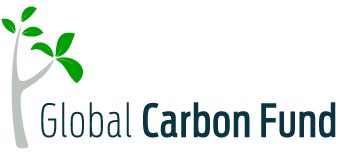Shell’s Big Q1 Profit Fuels Net Zero Drive Amid Emissions Challenge
Shell kicked off 2025 with a solid performance, reporting $5.6 billion in adjusted earnings for Q1. While this marked a 28% decline from the same period last year, mainly due to weaker oil prices and softer refining margins, it was still a big jump from the previous quarter’s $3.7 billion. But how is the oil giant managing its emissions and sustainability target?
Let’s explore…
Shell’s Focused Portfolio and Strategic Moves
Despite market headwinds, the oil major kept its financial footing strong, strengthening its energy portfolio in Q1 2025. The acquisition of Pavilion Energy furthered its global LNG trading and optimization capabilities.
At the same time, Shell exited less strategic assets, including its onshore operations in Nigeria and the Singapore Energy and Chemicals Park. These moves reflect Shell’s strategy to high-grade its portfolio and focus on higher-value assets.
Cash flow from operations came in at $9.3 billion, down from $13.2 billion in Q4 2024, reflecting a $2.7 billion working capital outflow.
Looking ahead, Shell is sticking to its disciplined investment approach with a 2025 capital expenditure plan of $20–22 billion.

Segment Performance
- Integrated Gas and Upstream: Delivered strong earnings, remaining Shell’s top-performing segments.
- Chemicals & Products: Returned to profitability after recent struggles.
- Renewables & Energy Solutions: Narrowed losses to breakeven, showing signs of improvement from Q4 2024.
Overall, Shell’s Q1 performance shows that it is staying financially disciplined, adapting to market shifts, and keeping investors front and center.
Shell Cuts Emissions, but Net Zero Still a Distant Goal
Energy major shows progress in Scope 1 and 2 emissions, but customer emissions remain stubbornly high.

Scope 1 and Scope 2 Emissions
Shell’s 2023 Sustainability Report showed measurable progress in cutting emissions from its operations.
- It reported 57 million tonnes of CO₂ equivalent in combined Scope 1 and 2 emissions.
It means it’s down 2% from 2022 and 31% lower than its 2016 baseline. This includes emissions from its oil refineries, LNG facilities, and other assets it operates globally.
Shell has committed to reducing 50% of its Scope 1 and 2 emissions by 2030, using 2016 as the baseline. Key actions include shuttering high-emitting sites, improving energy efficiency, and expanding its use of renewable power.
Scope 3 Emissions
Shell’s customer-driven Scope 3 emissions, which account for nearly 90% of Shell’s total carbon footprint, are significantly high. In 2023, these emissions totaled 1,147 million tonnes of CO₂ equivalent, only slightly below 2022 levels.
Last year in March, Shell set a new goal to cut emissions from the use of its oil products by 15–20% by 2030, using 2021 as the baseline. This supports the EU’s Fit for 55 plan and efforts to clean up transport. However, critics say the goal falls short because it excludes emissions from natural gas and LNG.
Other important milestones to reach its net-zero target include:
- Eliminate routine flaring of natural gas by 2025 to curb carbon emissions.
- Reduce methane emissions intensity below 0.2% and reach near-zero methane emissions by 2030.
From Oil Giant to Clean Energy Player
Shell is reducing its carbon footprint by closing or selling off older, high-emission refineries and oil assets. It’s also upgrading its infrastructure by swapping diesel for electric systems and using smart tools to boost energy efficiency.

Investing in Solar and Wind
Shell is going big on renewables. It’s installing solar panels and wind turbines across its operations to power sites with clean electricity. In some regions, renewables now meet all their electricity needs, slashing Scope 2 emissions.
From U.S. solar parks to offshore wind farms in Europe, Shell is scaling up its clean energy game. These projects not only cut emissions but also help power green hydrogen production.
Trapping Emissions with CCS
For industries that are hard to decarbonize, like chemicals and refining, Shell is betting on carbon capture and storage (CCS). It’s building large CCS hubs in Europe and North America to trap CO₂ and store it safely underground.
Shell is a key player in Europe’s biggest CCS projects, including Northern Lights (Norway), Porthos (Netherlands), and Acorn (UK). These hubs will store emissions from heavy industry in underground reservoirs.
From Offsets to Removals
Shell has relied on carbon credits in the past, but it’s now pivoting to tech-based removals like direct air capture. These newer methods offer more reliable and permanent carbon removal.
Changing the Fuel Mix
Shell is shifting its product line, too. It’s moving away from oil and focusing more on its low-carbon fuels business, natural gas, biofuels, and hydrogen.
It supported the EU’s renewable hydrogen rules and backed the U.S. Inflation Reduction Act, which funds CCS and clean fuels. Additionally, it is also working with India and Canada to build hydrogen infrastructure and CO₂ transport systems.
In the Netherlands, Shell is building Holland Hydrogen 1, Europe’s largest green hydrogen plant, powered by offshore wind. When it launches in 2025, it could be a blueprint for clean hydrogen at scale.
The Takeaways from Shell’s Sustainability Snapshot:
- Increasing the proportion of gas and LNG in hydrocarbon sales
- Rising sales of low-carbon fuels, such as biofuels
- Growing our power sales, including those of renewable power
- Reducing sales of oil products
- Developing and deploying more CCS
- Using High-quality carbon credits, such as nature-based solutions, to offset remaining carbon emissions.
Shell is moving from being an oil major to an energy transition leader. By cutting emissions, scaling renewables, and pushing new tech like hydrogen and CCS, it’s trying to future-proof its business and the planet.
- FURTHER READING: The “Northern Lights” Shines: Shell, Equinor, and TotalEnergies JV Powers the Norway CCS Project
The post Shell’s Big Q1 Profit Fuels Net Zero Drive Amid Emissions Challenge appeared first on Carbon Credits.



